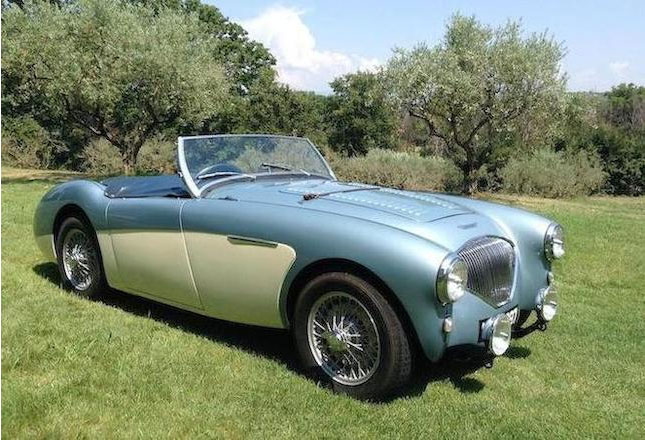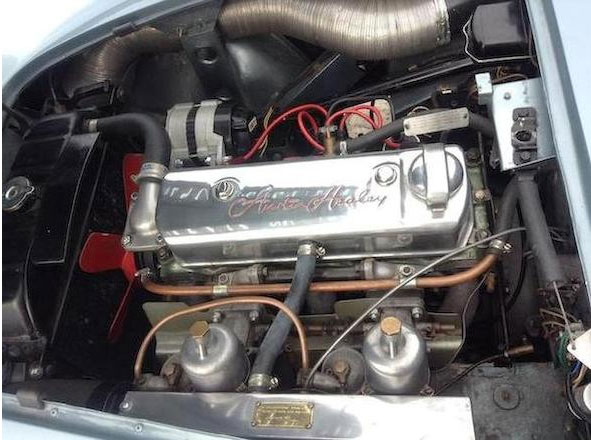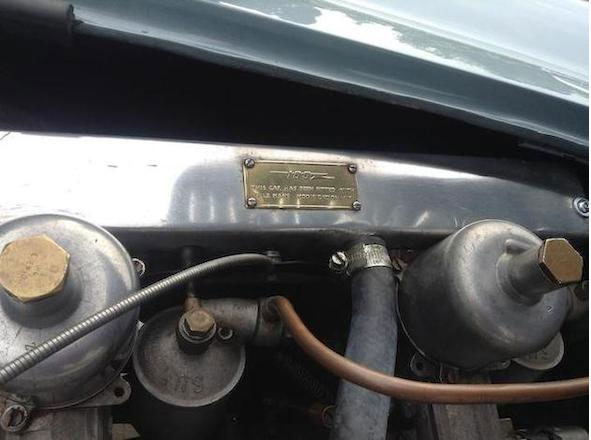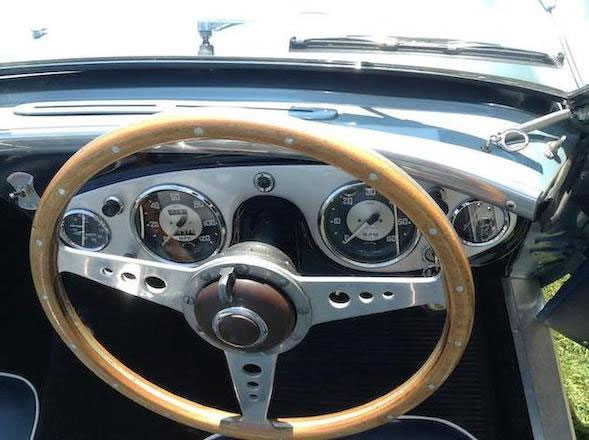A big Austin-Healey has long been at the top of my list of cars I would like to own; but I should add straight away that there is not one ounce of practical logic in that desire, nor indeed should there be. If one wanted a “practical” touring car, one simply wouldn’t choose a big Healey. In the rain you are going to have some water coming into the cockpit, you might need your handkerchief to manually demist the windscreen, for a long country drive the gorgeous exhaust note music is quite likely to result in a bit of a headache either during the drive or the next day, and your rear end will become uncomfortably sore by the time you’ve done five or six hours behind the wheel. An Austin-Healey is just not a logical choice. But are logical choices the best choices? Owning a classic car is all about having a relationship, and we all know the best relationships are often not logical!
Buying an Austin-Healey is like that. You are choosing not to make a logical, sensible, choice; you are making a passionate choice. You are committing to wielding spanner and screwdriver, periodically having grease stains under your fingernails, and periodically needing aspirin. But the passionate choices in life are more often than not the ones we treasure the most.

So what is it about the Austin-Healey that makes it a “passionate” choice? It’s not Italian, it’s not even French; Austin-Healeys were made by the stodgy “bangers and mash” British Motor Corporation and in truth it’s hard to imagine much that evokes less passion than BMC. Yet, in their association with Donald Healey, BMC created a car that made pulses race. Sacha Distel, in the days when he was chauffeuring Brigitte Bardot, chose not a Ferrari, not an Alfa Romeo, but a product of the Austin Division of BMC: the Austin-Healey 100-4.

But the Austin-Healey was not simply a corporate creation of BMC. The car came into existence because the then BMC chairman, Leonard Lord, saw the Healey 100 at the 1952 Earls Court Motor Show, and it caught his imagination. The car was designed by Donald Healey, with a chassis created by his eldest son Geoff Healey and a gentleman named Barrie Bilbie. The gracefully-beautiful bodywork was the creation of Gerry Coker. Donald Healey’s intention had been to create a sports car that would put 100mph in reach for sports car enthusiasts of modest means, hence the name “Healey 100”. Donald Healey’s small company had assumed they would be building the cars themselves and they had a production capability of about 200 cars per year. But at Earl’s Court they received orders for over 3000 cars.
Leonard Lord noted that the gorgeous sports car that had taken the 1952 Motor Show by storm used an Austin A90 Atlantic engine and drive train. He met with Donald Healey over dinner and the two forged a twenty year agreement that saw the “Healey 100” re-badged as the “Austin-Healey 100” and BMC taking over production and distribution of the new car.
The Austin-Healey 100 BN1 entered production in 1953 with the 2660cc four cylinder engine (somewhat tweaked) and three speed gearbox of the Austin A90 Atlantic but with electric overdrive, it was a production run that would not end until 1963, twenty years later, with the Austin-Healey 3000 Mk III BJ8. Just over 73,000 cars had been made. After his twenty year contract with BMC Donald Healey moved over to Jensen, who had made the bodywork for the Austin-Healeys from the outset, and began a new chapter of sports car history.



It was in the first year of production, 1953, that the factory entered two slightly modified Austin-Healey 100s in the 24 hour Le Mans endurance race. These cars managed to attain 12th and 14th places. This created considerable interest and so the factory decided to offer “bolt on” kits distributed through the BMC network of dealers to bring any existing Austin-Healey 100 up to the Le Mans car specification. The kit included a high lift camshaft and stronger valve springs, a distributor with a modified advance curve, and a new inlet manifold with two SU HD6 1.75” carburettors and a cold air box to improve air flow into the engine. The kit increased the stock engine’s power from 90bhp to 100bhp.
The Austin-Healey 100 BN1 was progressively improved through 1954-1955. The three speed gearbox with electric overdrive was replaced with a four speed gearbox also with electric overdrive, albeit without synchromesh on first gear. In 1955 fifty Austin-Healey 100 BN1 cars were created to race specification (the Austin-Healey 100S), and then in August of that year BN2 cars were made available with the “Le Mans” modifications (the Austin-Healey 100M) which included the “Le Mans” performance kit also with high compression pistons and suspension modifications including stiffer anti-roll bars and Armstrong shock absorbers. The 100S and 100M both feature the distinctive louvred bonnet. With these improvements in place the power of the humble Austin A90 Atlantic engine was increased to 110bhp and the Austin-Healey 100M was capable of around 120mph if you folded the windscreen down. An unknown number of BN1 cars were also converted to “Le Mans” specifications.
One such Austin-Healey 100 BN1 ‘Le Mans’ spec is to be auctioned by Bonhams at this year’s Goodwood Revival, with an estimate of £50,000-£60,000 but it could achieve more- the Hagerty Valuation Tool shows an ‘excellent’ example valued at £70,700. The factory plate attached to the cold air box attests to its originality, and the car is fitted with a four-speed with electric overdrive gearbox and, as it is a late model BN1, this may also be correct. It also has part-aluminium and part-steel bodywork. The car was fully restored twenty years ago so it has the patina of a gently used car as opposed to the “new car” feel of a recent restoration. In short, it has character. The engine was re-built in 2010 and the car has only covered 1,373 miles since that re-build. The car comes with a BMIHT Certificate, UK V5 registration document and a condition report done in 2009 by Henri Pluton.
Would buying this classic Austin-Healey 100 BN1 “Le Mans” specification car be a logical choice? My own touring car is somewhat faster, wonderfully stable winding through the mountains on wet and slippery roads, is delightfully quiet at motorway speed, has climate control and a Blaupunkt sound system that lets you bask in music by Aram Khachaturian, or Sacha Distel, or whomsoever else takes your fancy. It’s a logical choice. By comparison this Austin-Healey 100 BN1 has drum brakes not discs, and of course no ABS, no climate control, and no Blaupunkt sound system for your music delight. But it does have the wonderful music of its sports exhaust, it will take all your driving skills to use it well and you will love the effort it takes, and perhaps even the fact that time pushing it through mountain roads for a few hours will likely require you to take aspirin later. It’s a car of passion, created by passionate people for passionate people. It’s not a “logical” choice. It’s a passionate choice, one that you would be unlikely to regret.
Charles Branch writes for Silodrome: www.silodrome.com
Read more
Buying Guide: Austin-Healey 100 and 3000
It’s alive! Austin-Healey Sprite project car
Why America is falling in love with the Austin-Healey Frogeye Sprite – again








